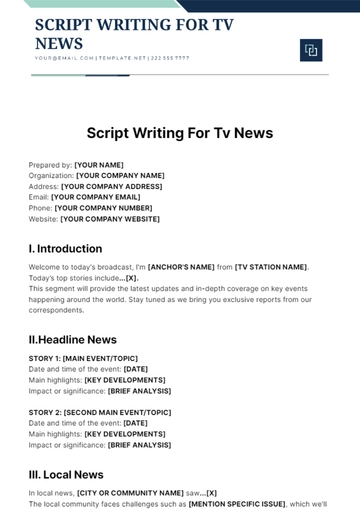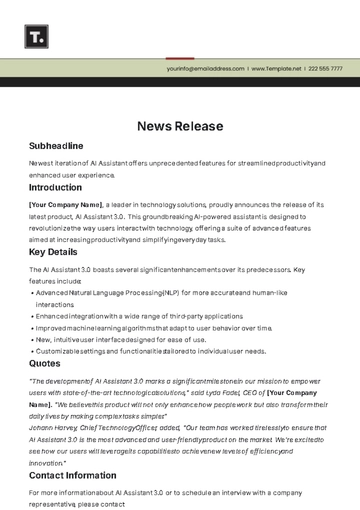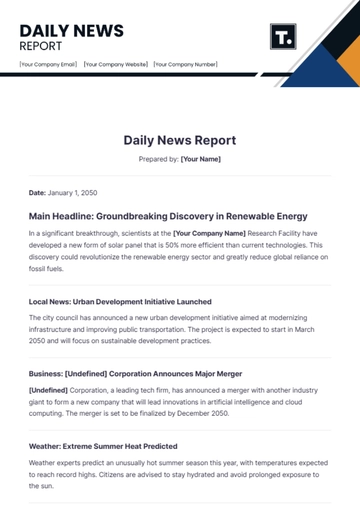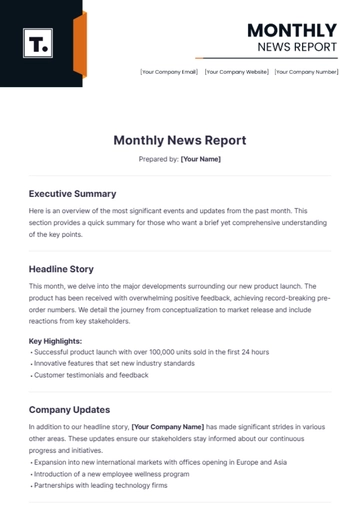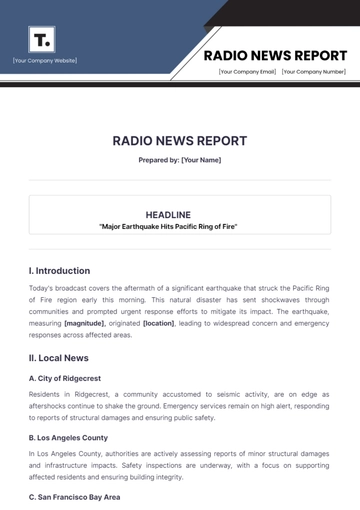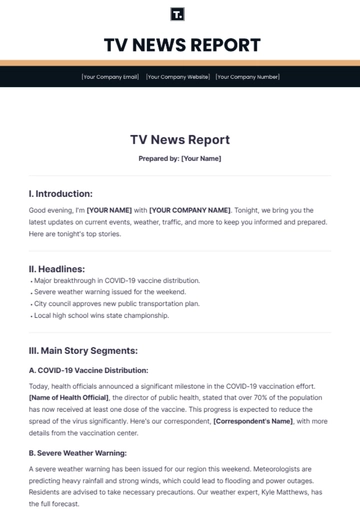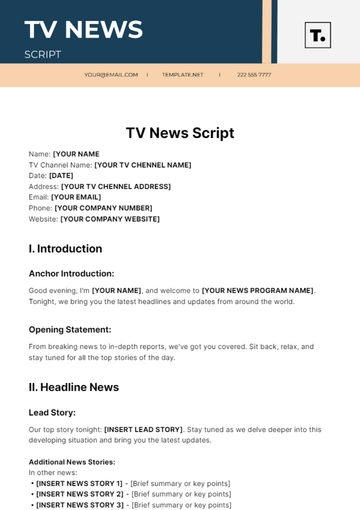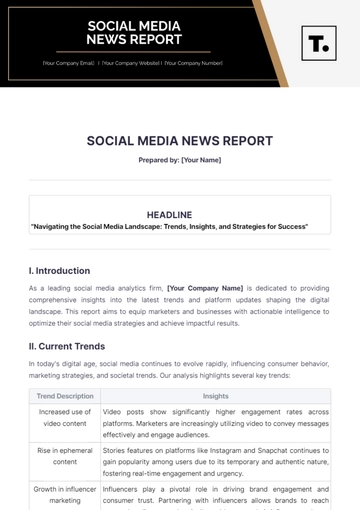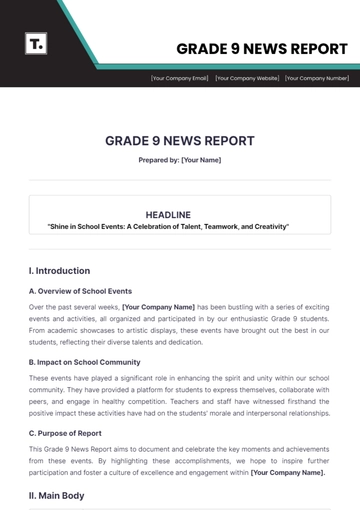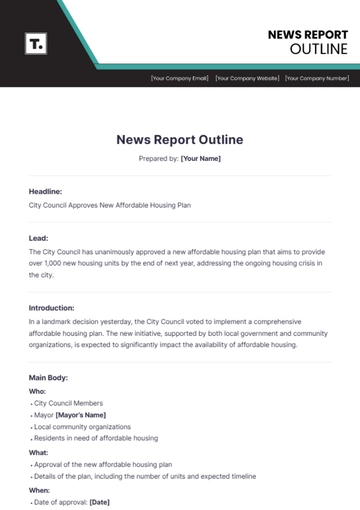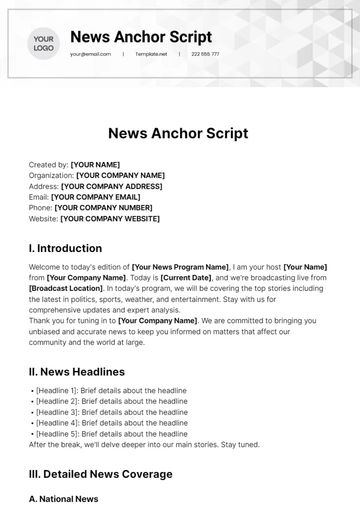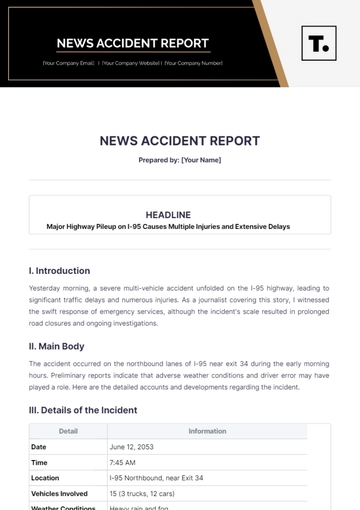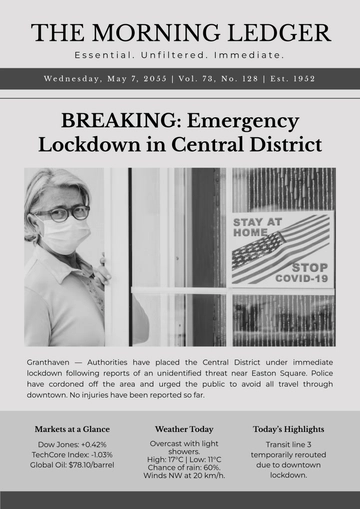Free Accident Brief
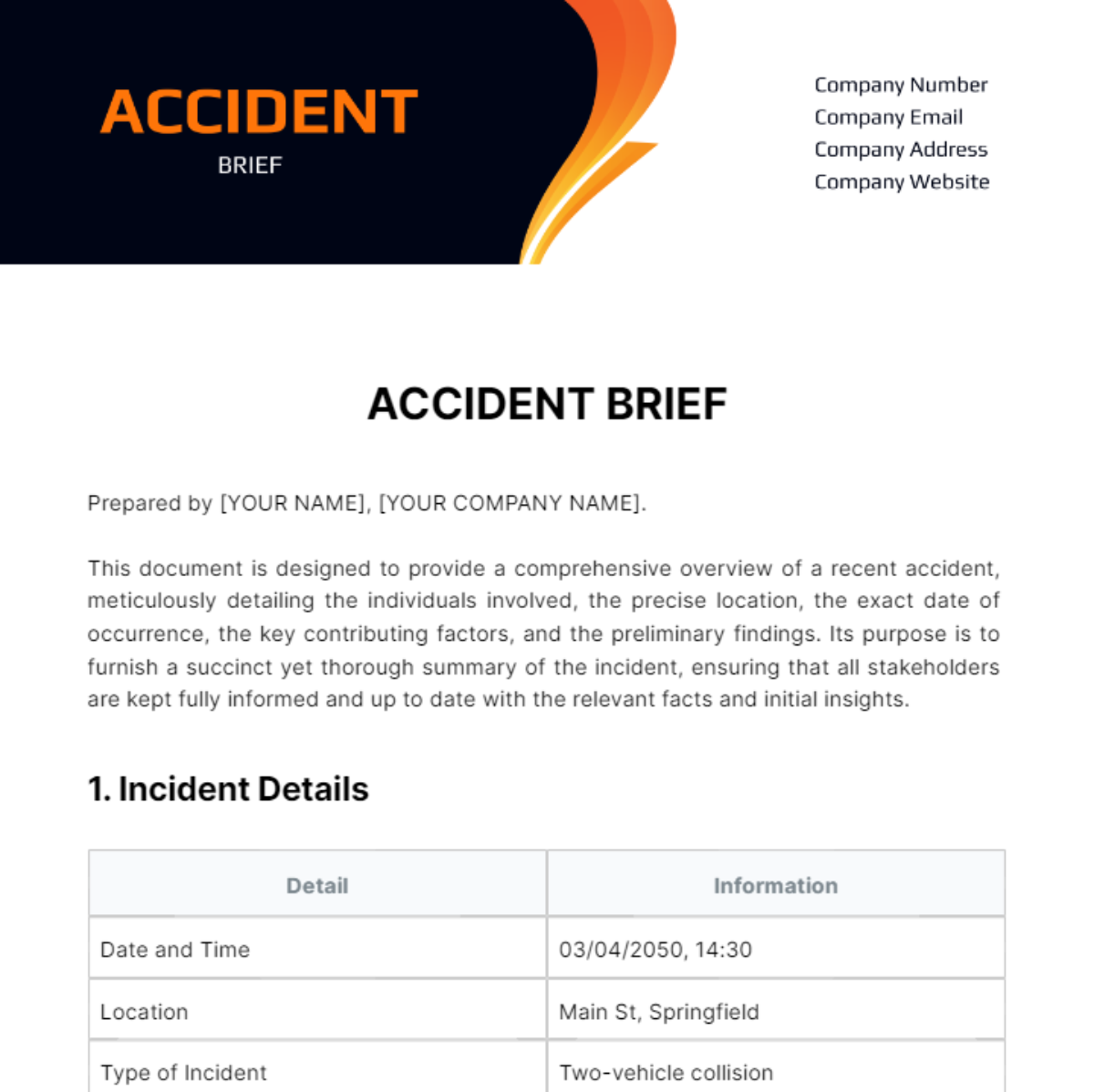
Prepared by [YOUR NAME], [YOUR COMPANY NAME].
This document is designed to provide a comprehensive overview of a recent accident, meticulously detailing the individuals involved, the precise location, the exact date of occurrence, the key contributing factors, and the preliminary findings. Its purpose is to furnish a succinct yet thorough summary of the incident, ensuring that all stakeholders are kept fully informed and up to date with the relevant facts and initial insights.
1. Incident Details
Detail | Information |
|---|---|
Date and Time | 03/04/2050, 14:30 |
Location | Main St, Springfield |
Type of Incident | Two-vehicle collision |
2. Parties Involved
Name | Role | Injuries |
|---|---|---|
John Doe | Driver (Car A) | Minor cuts and bruises |
Jane Smith | Driver (Car B) | Whiplash, hospitalized |
3. Factors Leading To The Incident
This section delineates the various conditions and events that precipitated the accident, providing a clear understanding of the contributing elements.
Circumstances:
The incident occurred at a busy intersection known for frequent traffic congestion, particularly during rush hour, which significantly increased the risk of collisions.
Both vehicles were attempting to navigate the intersection simultaneously, with one vehicle allegedly running a red light.
Environmental Factors:
The weather conditions at the time were notably poor, with heavy rainfall reducing visibility and making the roadway slick, contributing to reduced reaction times and stopping distances.
Inadequate street lighting at the location further compromised visibility, especially given the adverse weather conditions.
Human Characteristics:
Preliminary investigations suggest that the driver of Car A was experiencing fatigue, which may have impaired their judgment and reaction time.
The driver of Car B was reportedly using a mobile device moments before the collision, indicating a significant lapse in attention to the road.
4. Preliminary Findings
These preliminary findings suggest a combination of human error, adverse environmental conditions, and infrastructural issues contributed to the occurrence of the accident. Further analysis is underway to fully understand the dynamics of the incident and to develop recommendations to prevent similar accidents in the future.
Preliminary Cause:
The primary cause identified is the failure to adhere to traffic signals by the driver of Car A. Evidence and eyewitness accounts suggest that Car A entered the intersection against a red light, directly leading to the collision with Car B, which had the right of way.
A secondary cause appears to be the distracted driving by the driver of Car B, who was using a mobile device at the time of the accident. This distraction likely impaired the driver's ability to react to the developing situation and take evasive action to avoid the collision.
Contributing Factors:
Environmental conditions played a significant role, with heavy rainfall reducing visibility and making the roadway slick, which affected both drivers' ability to perceive and respond to the traffic signal and each other's movements.
The fatigue experienced by the driver of Car A, as indicated by the investigation, may have contributed to a delayed reaction to the traffic signals and an overall reduction in driving performance.
Inadequate street lighting at the intersection may have compounded the effects of the poor weather conditions, making it harder for both drivers to see the traffic signals and each other until it was too late to avoid the collision.
5. Safety Recommendations
These recommendations aim not only to address the specific factors identified in this accident but also to improve overall traffic safety and reduce the likelihood of similar incidents occurring in the future.
Recommendation:
The recommendation is to improve intersection safety by implementing robust traffic control measures, such as countdown timers and red-light cameras, to deter red-light running and enhance law enforcement's ability to enforce traffic laws. Additionally, a public awareness campaign should be launched, emphasizing the dangers of distracted driving, involving educational programs, social media outreach, and collaboration with local schools and organizations.
Further Investigation:
A thorough environmental and infrastructure review is needed to identify and address potential road design, lighting, and signage deficiencies that could lead to accidents. The review should also consider the potential benefits of implementing advanced technologies like intelligent transportation systems. A deeper analysis of human factors, including fatigue and distracted driving, is needed to develop targeted interventions and strengthen existing laws and regulations.
- 100% Customizable, free editor
- Access 1 Million+ Templates, photo’s & graphics
- Download or share as a template
- Click and replace photos, graphics, text, backgrounds
- Resize, crop, AI write & more
- Access advanced editor
Navigate the aftermath of incidents with Template.net's Accident Brief Template. Designed for clarity and efficiency, this editable template is customizable to detail accidents comprehensively. Editable in our AI Editor Tool, it streamlines reporting for workplaces and insurance purposes, ensuring all essential information is captured accurately. Enhance your incident documentation process now.







